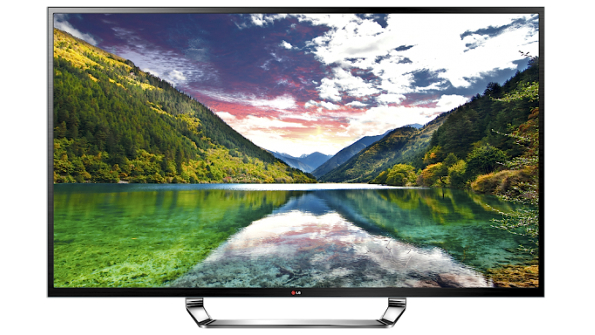H.265 and UHDTV Ultra High-definition TV Getting Ready for Primetime

Are you ready for UHDTV? Manufacturers are, and they are ramping up for the next phase in how we consumer video, both for mobile TV and via big screens. There are some hurdles, and although it seemingly took the better part of decade for the U.S. to adopt to 720p/1080p HDTV, the next wave of ultra resolution definitely seems like it is on the fast track.
So just how big of a leap is going from HDTV to UHDTV? It’s big. Current HDTV specs come in at 1280x720/1920x1080, 16:9 ratio and 24p, 30p and 60i. UHDTV ramps up to a pretty big jump of 7680x4320. The same aspect ratio of 16:9 is in effect, but the frame rate is bumped up to 60p, for extremely high-definition, flicker-free imagery. UHDTV covers 4K 2160p as well as 8K at 4320p. 4K is 4X the pixels of 1080p, and 8K is a whopping 16X the pixels of 1080p. Anyone who had attended a trade show in the past year has no doubt seen these new sets in action. Pricing and content remain two big challenges. Even the lower-cost sets could clock in around $25,000, but could eventually come down to around $10,000. Still pricey, but manageable. Companies such as Sony, LG and Sharp are going full force with producing sets, but the lack of content could be problematic. Sony announced this week that its recently debuted PS4 (Playstation 4) will support 4K video content, and the company plans on remastering movies for the new format.
The issue also arises in relationship to file size. Even 4K movies could be huge; 100GB would not be uncommon. So you’ve got storage concerns to worry about (how big would the PS4 hard drive be?) and also bandwidth. With cable and satellite providers very interested in throttling bandwidth and implementing caps, 4K and 8K content could be stalled at the gates.
Which is where H.265 comes in. Just recently finalized, the new video standard is positioned to replace solutions such as MPEG-2 and other formats with highly efficient scaleable video. All of these formats rely on compression and reducing file sizes but also not deteriorating the video image. H.265 in some cases can reduce file size by almost 50 percent when compared to H.264. Bit-rate reduction can also produce even better numbers of up to 70 percent more efficiency, all while maintaining picture quality. Chroma subsampling can take a hit, however, not peaking past 4:2:0. However, extensions to the standard, targeted for the coming year, would allow for 4:2:2 and 4:4:4 sampling, as well as 3-D multiview video encoding.
So how does H.265 accomplish this fairly dramatic compression vs. quality ratio? There are several factors but the easiest to point to is how H.265 actually compresses the picture. Up until now, compression has be a standard grid of equal small squares. If a picture has a solid color for example, less of the small squares would need to change, making for a more efficient stream or file. H.265 takes it a big leap forward and is not constrained to square boxes, the compression works with different sizes of boxes, rectangles, etc. So instead of a series of small equal squares, a solid area could be compressed with a few larger squares. This leads to much more efficient and dramatically better compression. But there is a tradeoff, and that is processing power. To accomplish this magic, H.265 takes more horsepower to decode than H.264, meaning more powerful processing chips from companies such as Broadcom need to be utilized.
Which brings us to mobile. It’s to be expected that all of this technology will trickle down (or maybe be more of a flood) to mobile TV. Handsets are getting bigger, but not 4K/8K- screen bigger. However the benefits of H.265 are easy to see. A format that is more efficient for HDTV would be dramatically more efficient for mobile. Processors are getting faster on mobile devices, and they are going to need to be, as H.265 can take some power to decode. In theory, if content can be a third or half as large as far as file size goes, then downloading shows and movies on mobile would be even more appealing. Of course a lot of things need to fall into place concerning hardware and software on platforms such as Apple (iPhone, iPad), Google (Nexus, Android Phones) and Windows Phones. More efficient processors as well as integration and support into the various flavors of OS, but there is potential to embrace a new and more improved standard.
In the end, 4K/8K UHDTV and H.265, while being amazing technologies, are really just getting out of the gate. There are many unanswered questions for implementation. Such as the Blu-ray association, which needs to figure out a new storage format that even 100-128GB BDXL discs may not be able to accommodate. Mass acceptance, the most important element, is still a few years off, but the momentum seems rapid. We could all be enjoying the next wave of ultra high definition before we know it.
Get the TV Tech Newsletter
The professional video industry's #1 source for news, trends and product and tech information. Sign up below.
